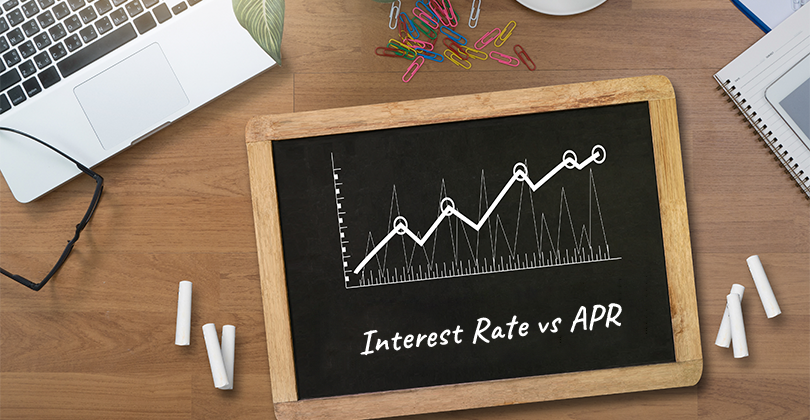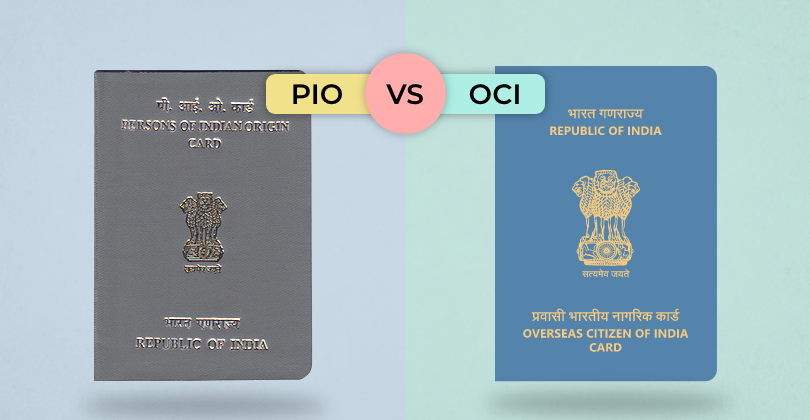Are you of Indian origin and living abroad? You've probably come across terms like PIO and OCI. These cards offer different benefits, but it can
Borrowing money almost always involves paying interest. Finding the least costly loan or credit card alternative involves evaluating borrowing costs from different lenders. But if you only look at the interest rate, are you making the right comparison? No, not necessarily.
You need to understand the terms APR and interest rate to make the best choice for the loan you want to avail yourself of. The difference between a fixed interest rate and an APR is that the APR includes not only the loan interest rate but also any extra fees and other expenditures. As a result, the APR metric is used to compare the two offers.
Read on to learn more about the crucial difference between a fixed interest rate and an APR when borrowing funds.
What Is a Fixed Interest Rate?
“Fixed interest rate vs APR” has always been a debate that borrowers go through before taking on loans. To understand this better, let us first get familiar with the term fixed interest rates.
A fixed interest rate is a rate assessed on a debt, such as a mortgage, credit card, loan, or corporate bond, that remains constant. It applies to the duration of the loan/ liability or a portion of it.
Most long-term borrowers choose fixed-rate loans as they can accurately anticipate future expenditures and periodic payments.
How Does a Fixed-Interest Rate Loan Work?
A fixed-interest rate loan requires you to pay only the agreed-upon amount of interest for a specified time, such as one year. The reverse of this is variable credit. Fixed interest rates are offered on the following types of loans:
-
Student loans
-
Mortgages
-
Automobile loans
-
Home Equity Loans
-
Credit Cards
A fixed interest rate is like a fixed fee you pay on top of the money you borrowed. Each time you make a payment, it goes towards two things: a little bit of extra money for borrowing (the interest) and some money that actually pays back what you borrowed (the principal). Fixed interest rates can limit the additional penalties that come with late payments, but you should avoid entering into a credit agreement if late payments are expected to occur regularly.
How to Calculate Fixed Interest Rates?
To figure out your loan payments:
-
Divide the annual interest rate by the number of payments yearly.
-
Multiply the result by the loan principal.
For example, if you borrow ₹40,000 for 10 years at 5% interest (with 12 payments yearly), it would be:
(0.05 / 12) x ₹40,000 = ₹166.66
To check the remaining balance after making repayments:
-
Subtract the repayment amount from the principal.
-
Subtract the interest calculated from the result.
If you've paid back ₹5,000:
₹40,000 – (₹5,000 – 5%) = ₹35,250
What is APR?
APR is the rate used to understand the cost of borrowing. It takes into account the interest rate and additional charges of a credit offer. All lenders determine what their APR is before you sign a credit agreement. The APR only covers mandatory costs. Some costs, such as payment protection, may not be considered, so it is vital to check the terms and conditions carefully before applying for a loan.
📗 Read more- 15 Different Types of Loans You Should Know About
How Does APR Work?
Before we understand the difference between an APR and a fixed interest rate, let's first understand how APR works with loans.
APR takes into account the interest rate and any other costs associated with a credit offer. Lenders disclose their APR before you sign a credit deal. When you have a credit card balance, you have to pay interest. Credit card providers review your credit score to determine your APR. A higher credit score results in a lower interest rate. While all credit cards have an APR, you are not obligated to pay it. Most credit cards provide a grace period during which you can pay off the amount without incurring interest.
How to Calculate APR?
To calculate the interest charges
-
Know your credit card's APR. Let's say it's 20%.
-
Divide the APR by 365, the number of days in a year:
20% ÷ 365 = 0.0548% (daily rate). -
Multiply the daily rate by your balance. For example, if you owe ₹1,000:
0.0548% × ₹1,000 = ₹0.548, approximately 55 paisa per day. -
To find the monthly interest, multiply the daily rate by the number of days in your billing cycle. If it's 27 days:
₹0.55 × 27 = ₹14.85.
So, on a ₹1,000 balance with a 20% APR, you'd pay approximately ₹14.85 in interest monthly.
Understanding the Difference Between APR and Fixed Rate
Here is the difference between loan interest vs APR:
| Aspect | Loan Interest Rate | APR (Annual Percentage Rate) |
|---|---|---|
| Definition | Percentage of interest charged on the loan | Reflects the total cost of borrowing, including fees |
| Components Included | Only the interest charged | Interest rate, plus fees like origination fees, points |
| Calculation | Based solely on the interest rate | Includes interest rate and fees spread over loan term |
| Transparency | Straightforward and easy-to-understand | Comprehensive, may be more complex for borrowers |
| Comparison | Useful for comparing interest costs | Essential for comparing the overall cost of different loans |
| Legal Requirement | Required to disclose the interest rate | Legally mandated disclosure before signing the loan |
| Impact on Borrowing Cost | Provides a basic understanding of interest | Gives an accurate picture of the total cost of borrowing |
| Borrower Awareness | Borrowers may focus solely on this rate | Helps understand the full cost of borrowing, including fees |
| Loan Types | Applicable to various loan types | Particularly important for loans with additional fees |
| Regulatory Compliance | Compliance may vary based on loan type | Regulated by law to ensure transparency and fairness |
| Aspect | Loan Interest Rate | APR (Annual Percentage Rate) |
|---|---|---|
| Definition | Percentage of interest charged on the loan | Reflects the total cost of borrowing, including fees |
| Components Included | Only the interest charged | Interest rate, plus fees like origination fees, points |
| Calculation | Based solely on the interest rate | Includes interest rate and fees spread over loan term |
| Transparency | Straightforward and easy-to-understand | Comprehensive, may be more complex for borrowers |
| Comparison | Useful for comparing interest costs | Essential for comparing the overall cost of different loans |
| Legal Requirement | Required to disclose the interest rate | Legally mandated disclosure before signing the loan |
| Impact on Borrowing Cost | Provides a basic understanding of interest | Gives an accurate picture of the total cost of borrowing |
| Borrower Awareness | Borrowers may focus solely on this rate | Helps understand the full cost of borrowing, including fees |
| Loan Types | Applicable to various loan types | Particularly important for loans with additional fees |
| Regulatory Compliance | Compliance may vary based on loan type | Regulated by law to ensure transparency and fairness |
📗 Read more- 15 What's the Best Reason to Say You Need a Loan?
Conclusion
While interest rates and APRs overlap for some forms of credit, understanding the fixed rate and APR difference for particular loans will help you determine how much you'll repay. Remember, a slightly lower interest rate might not be the best deal if the APR is significantly higher due to extra fees. Therefore, when comparing loan choices, looking at both numbers can assist you with avoiding spending more in the long run.
AUTHOR
KreditBee As a market leader in the Fintech industry, we strive to bring you the best information to help you manage finances better. These blogs aim to make complicated monetary matters a whole lot simpler.







